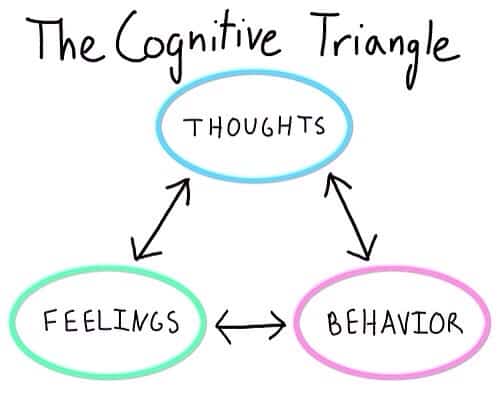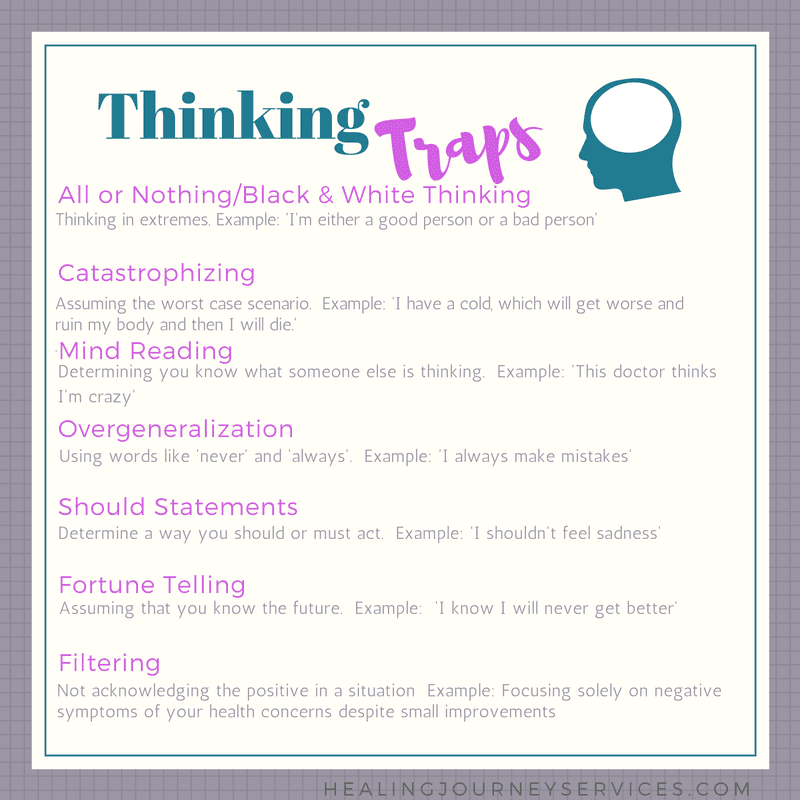False Thoughts
Just because we think it, doesn’t make it true.
This was one of my favourite lines when I worked in private practice as a therapist.
How we interpret situations impacts how we feel about ourselves and others and as a result, how we relate to the world.
Let’s imagine the following scenario: My guy friend (read: someone I’m looking to date) hasn’t returned my phone call or text.
Response #1: If I think that this guy isn’t calling me back because he doesn’t like me, I might feel sad and rejected and perhaps even worry that I will be alone forever. This might lead me to cry, hide away in my house or delete all of my dating apps.
Response #2: Imagine that same scenario again, but this time, a different interpretation; I think that the guy isn’t calling me back because he is very stressed out and busy and forgot. In this case, I might experience feelings of worry for my friend’s stress level and some compassion for his busy life. I may decide to wait a few more days for him to return the call, to follow up with him myself, or decide that I don’t want to date someone that is so busy.
With both responses the scenarios are exactly the same. A guy didn’t return my call. What changed was how I interpreted the event at hand. My thoughts about the situation impacted how I felt about the situation. In the first example I was sad, while in the second example, I felt some worry and compassion. My feelings led me to respond differently. I turned inward and withdrew from the world in the first example, and in the second example, I was patient and reached out after a few days.
This scenario clearly exemplifies the cognitive triangle, a commonly referenced component of cognitive behavior therapy. Essentially the cognitive triangle theorizes that:
Our thoughts about a situation impact our feelings, which in turn impacts our behaviour, which cycles back around to impact our thoughts.

It is important to note that the cognitive triangle is not at all intended to undermine feelings or responses. In both examples above, neither my feelings of sadness, or worry were ‘right’ or ‘wrong’. This is where a lot of people get stuck. They feel shameful or guilty for their feelings of sadness, worry, fear or angry. And as a result, they try and push their feelings away. However, what tends to happen in these cases is that the feelings which are being shoved away in some distant corner of the mind, protest for being ignored and become bigger. The key here is not to ignore your feelings but rather, to realize that you are experiencing these feelings as a result of a misinterpretation. If I thought that someone was ignoring me then of course I could feel sad. To say that I ‘should’ feel otherwise is completely ridiculous and invalidating. My actions also make sense based on my feelings. That is why the focus of CBT moves to the root of the issue – which is to examine the validity of the thoughts about the events.
 The truth is, some of our thoughts are faulty. Just because we think it, doesn’t make it true. This is where the concept of thinking traps comes in. These are common thinking errors which lead us to misinterpret events and actions. I like to use the analogy of a lens through which we see the world. Thinking traps are like seeing the world through a different shade of glasses. Everything is going to look blue if we are wearing blue-tinted glasses. The key then becomes identifying the shade of glasses we are wearing, and learning to take them off.
The truth is, some of our thoughts are faulty. Just because we think it, doesn’t make it true. This is where the concept of thinking traps comes in. These are common thinking errors which lead us to misinterpret events and actions. I like to use the analogy of a lens through which we see the world. Thinking traps are like seeing the world through a different shade of glasses. Everything is going to look blue if we are wearing blue-tinted glasses. The key then becomes identifying the shade of glasses we are wearing, and learning to take them off.People who struggle with depression and anxiety commonly engage in negative thinking patterns based on misinterpretations of events, and can cycle through a downward spiral if their interpretations of situations are left unchecked. However, you don’t need to have depression or anxiety to engage in faulty thinking. Everyone experiences thinking traps across their day. Below is a list common thinking traps that individuals engage in.

I personally have expertise in mind-reading. And let me tell you, this ‘expertise’ has gotten me in quite a bit of trouble. I have engaged in countless misinterpretations of peoples motives that has often led to quick (and angry) responses to someone’s actions based on my perception of motives that were not at all true. Through these costly errors I have slowly learned to identify the negative filter that I tend to process things through, and to confirm the facts first before responding.
So the next time you find yourself becoming emotional about a situation or response, take a minute to be non-judgementally mindful of your feelings, and explore the thinking trap that might lie behind those thoughts.






